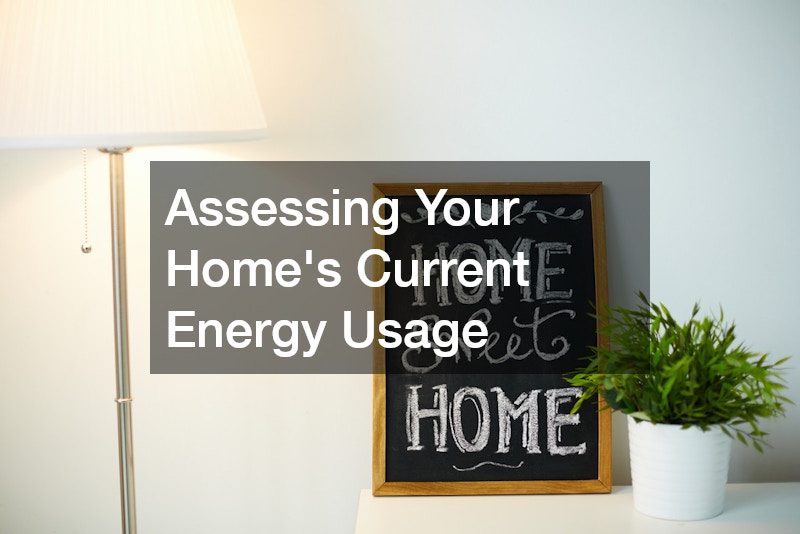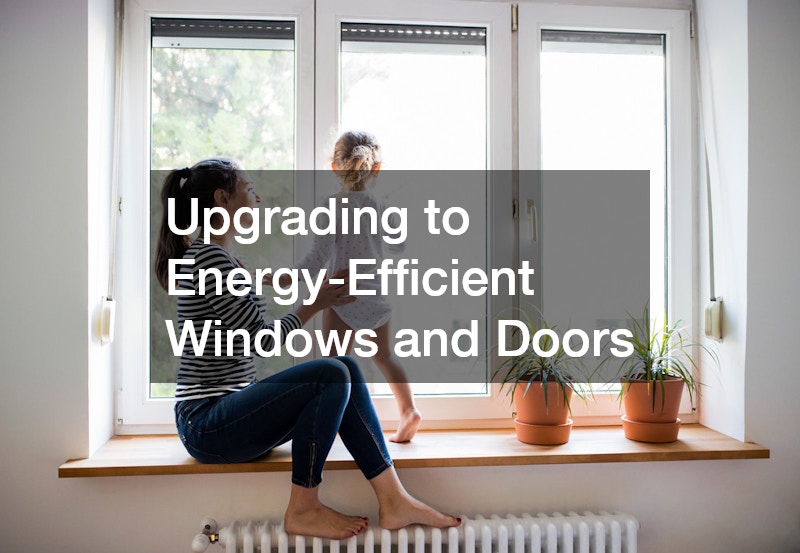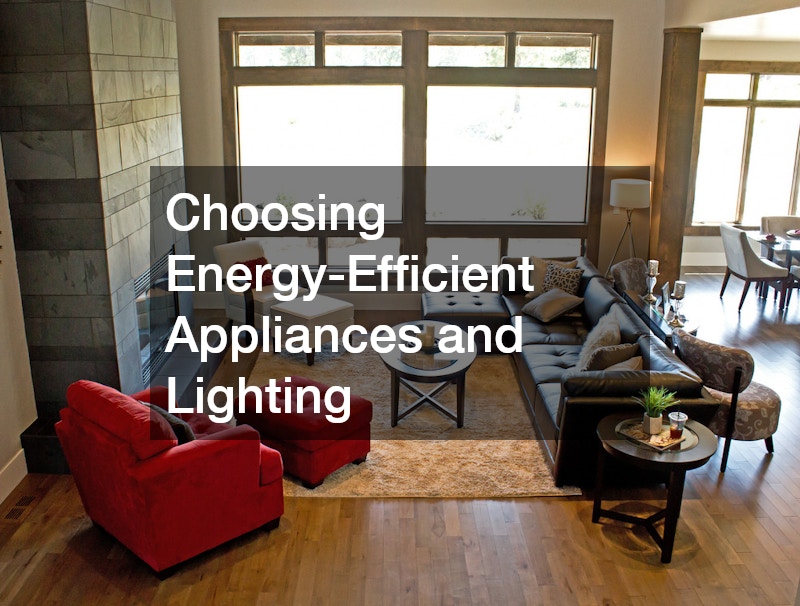Improving your home’s energy efficiency is one of the smartest investments you can make for both your wallet and the environment. Every small upgrade or behavioral change contributes to long-term savings and a more comfortable living space. Whether it’s lowering your utility bills, reducing your carbon footprint, or maintaining consistent indoor temperatures, energy efficiency benefits every household. Many homeowners don’t realize that inefficiencies often come from unnoticed areas—leaky seals, outdated systems, or poor insulation—all of which can lead to wasted energy and higher costs. By taking a proactive approach and following a few proven strategies, you can make your home more sustainable, efficient, and enjoyable to live in year-round.
Assessing Your Home’s Current Energy Usage
Before you can make meaningful improvements, it’s important to understand where your home currently stands in terms of energy efficiency. Conducting an energy audit—either through a professional service or a DIY inspection—can help you identify problem areas. Look for signs such as drafty windows, uneven heating and cooling, or unusually high energy bills. These clues often point to wasted energy and poor insulation. By gathering data about your home’s energy performance, you can prioritize upgrades that offer the most significant impact without overspending on unnecessary changes.
A great way to start optimizing your home’s energy use is by consulting with the best solar companies in your area to explore renewable energy options. Solar panels can dramatically reduce your reliance on the grid, cutting monthly expenses while supporting clean energy production. Many providers also offer free assessments to help you determine your home’s solar potential based on roof size, sun exposure, and energy consumption. Combining solar power with efficiency upgrades can position your household for maximum savings and long-term energy independence.
Sealing Gaps and Improving Insulation
One of the most effective ways to increase energy efficiency is by preventing conditioned air from escaping and outside air from getting in. Small leaks around windows, doors, attics, and crawl spaces can cause your heating and cooling systems to work much harder than necessary. Adding or upgrading insulation in key areas of your home can make a noticeable difference in comfort and cost savings. Proper insulation helps maintain consistent indoor temperatures, reduces noise, and enhances your home’s overall performance throughout the year.
If you notice drafts or uneven temperatures, partnering with local roofers can help identify and seal problem areas that may be contributing to heat loss. They can inspect the roof for gaps, damaged flashing, or insufficient insulation that could be letting air escape. Many roofing professionals also offer energy-efficient materials designed to reflect sunlight and reduce heat absorption during warmer months. By combining roof maintenance with insulation upgrades, you can ensure your home stays more comfortable while lowering your energy consumption and utility costs.
Upgrading to Energy-Efficient Windows and Doors
Windows and doors play a crucial role in maintaining your home’s comfort and energy performance. Older or poorly sealed windows can let conditioned air escape, forcing your heating and cooling systems to work harder and increasing energy costs. Replacing outdated windows and doors with energy-efficient models can greatly reduce heat transfer, improve insulation, and create a more stable indoor climate. Look for products with multiple panes, low-emissivity coatings, and insulated frames to achieve the best results. Not only do these upgrades enhance efficiency, but they also improve curb appeal and noise reduction, making your home more enjoyable overall.
For homeowners seeking added safety along with efficiency, incorporating blast resistant glass can be a smart investment. This specialized glass is designed to withstand impacts while providing excellent insulation properties. It keeps indoor temperatures steady, minimizes drafts, and offers peace of mind by protecting against severe weather or potential break-ins. Modern options also come with UV-blocking technology to prevent sun damage to your furniture and flooring. With the right window and door installations, your home can become both a secure and energy-efficient retreat.
Installing a Programmable or Smart Thermostat
Temperature regulation is one of the most effective ways to control your home’s energy consumption. A programmable or smart thermostat allows you to set heating and cooling schedules based on your daily routine, automatically adjusting when you’re asleep or away. This simple technology can significantly reduce wasted energy and lower your monthly utility bills. Some smart thermostats even learn your preferences over time, fine-tuning comfort levels while optimizing efficiency. With remote access features, you can manage your home’s climate from your phone, ensuring it’s always at the right temperature when you return.
To maximize comfort and reliability, it’s wise to pair your thermostat upgrade with professional 24/7 hvac repair support. A responsive HVAC technician can ensure that your heating and cooling systems are running efficiently and address potential issues before they escalate. Keeping your equipment in peak condition helps your thermostat’s adjustments work more effectively, providing steady comfort year-round. When combined, these two strategies create a powerful balance between energy savings and home comfort that benefits you in every season.
Choosing Energy-Efficient Appliances and Lighting
Appliances and lighting are two of the biggest contributors to household energy consumption. Upgrading to energy-efficient models can drastically reduce your power usage while maintaining top performance. When shopping for new appliances, look for ENERGY STAR-certified products that consume less electricity and water without compromising on quality. Similarly, switching from incandescent bulbs to LEDs can cut lighting costs by up to 80 percent. Energy-efficient upgrades may seem small individually, but together they lead to noticeable long-term savings and a more sustainable lifestyle.
Another way to enhance energy independence and preparedness is by investing in a generator that supports energy-efficient systems during power outages. A modern, efficient generator can power essential appliances and heating or cooling equipment when the grid goes down, preventing food spoilage and keeping your home safe. When selecting one, consider fuel type, wattage needs, and noise level to find the right fit for your household. Incorporating this backup system ensures that your energy-efficient home remains functional and secure, even during unexpected disruptions.
Maintaining Your HVAC System Regularly
A well-maintained HVAC system is essential for keeping your home energy-efficient year-round. Regular maintenance helps your heating and cooling units operate at peak performance, preventing them from overworking and consuming excess energy. Tasks like changing air filters, cleaning vents, and inspecting ductwork can make a significant difference in your system’s efficiency. Scheduling professional tune-ups at least twice a year ensures that small issues are caught early before they turn into costly repairs. Proper care not only reduces your utility bills but also extends the lifespan of your equipment, making it a worthwhile investment for any homeowner focused on efficiency.
If your system is showing signs of wear or damage, working with roof replacement companies can also be beneficial when your HVAC unit is housed near the roofline. These professionals can assess ventilation, attic insulation, and roof integrity—factors that directly impact how hard your HVAC system must work. A roof that’s properly sealed and insulated can significantly improve airflow and temperature regulation throughout your home. Combining roof and HVAC maintenance helps you achieve a balanced, energy-efficient indoor environment that performs well in every season.
Using Window Treatments to Regulate Temperature
Window treatments are an underrated but powerful way to enhance your home’s energy efficiency. Curtains, blinds, and shades act as natural insulators that help control sunlight, retain warmth in winter, and keep out excess heat during summer. Heavier drapes or cellular shades can reduce heat transfer through windows, easing the burden on your HVAC system. By adjusting treatments throughout the day, you can take advantage of natural light while minimizing the need for artificial heating or cooling. The result is a more comfortable home that uses energy more intelligently.
For homeowners who are also updating their interiors, a bathroom remodeler can incorporate energy-efficient materials and window treatments into your home design. In spaces like bathrooms, where humidity and temperature fluctuate, choosing moisture-resistant and insulating window coverings can make a big difference in comfort and efficiency. Coordinating upgrades between different rooms helps create a cohesive and sustainable design throughout your home. With simple yet thoughtful adjustments to your window treatments, you can significantly improve both style and energy savings.
Incorporating Renewable Energy Sources
One of the most impactful ways to make your home more energy-efficient is by introducing renewable energy solutions. Solar panels, wind turbines, or geothermal systems can greatly reduce your reliance on traditional utilities and lower your carbon footprint. These systems harness natural resources to generate power, offering long-term savings that often offset the initial installation cost. Many renewable energy options can also increase your property value, making them a wise investment for homeowners looking to combine sustainability with financial benefit.
If you’re planning to make other household improvements alongside renewable energy adoption, collaborating with a drain cleaning business can help ensure your plumbing systems are running efficiently as well. Even small plumbing issues like leaks or clogs can lead to wasted energy by forcing your water heater and pumps to work harder. Maintaining clear and efficient drainage ensures that every aspect of your home—electrical, plumbing, and environmental—works together seamlessly. By integrating renewable energy with ongoing home maintenance, you can create an efficient and eco-friendly space that’s built for long-term performance.
Managing Water Heating and Usage Efficiently
Water heating is one of the largest energy expenses in most households, often accounting for up to 20 percent of total utility costs. Managing your water heater effectively can help reduce unnecessary energy consumption while maintaining the comfort of hot water on demand. Lowering your water heater’s temperature setting, insulating the tank, and fixing leaks promptly are small steps that add up to big savings. You can also conserve energy by installing low-flow showerheads and faucets, which reduce water waste without sacrificing performance. Making these adjustments ensures that your home’s water system operates efficiently and sustainably.
For an even greater improvement in performance and savings, consider upgrading to tankless water heaters. Unlike traditional models that store hot water continuously, tankless systems heat water only when needed, providing an endless supply without the standby energy loss of a tank. These units are compact, long-lasting, and ideal for modern households looking to cut energy costs. Pairing a tankless water heater with regular plumbing maintenance ensures reliable operation for years to come. By optimizing how your home heats and uses water, you’ll see measurable reductions in both utility costs and environmental impact.
Building Long-Term Energy-Saving Habits
The most effective way to sustain energy efficiency over time is by building smart habits that become part of your daily routine. Turning off lights when leaving a room, unplugging unused electronics, and using energy-efficient settings on appliances all contribute to long-term savings. Small behavioral changes may seem minor, but together they create lasting results that lower your bills and reduce strain on your home’s systems. Over time, these practices help you develop a mindful approach to how energy is used, making efficiency a natural part of your lifestyle.
To maintain these habits even during power interruptions, investing in reliable water heater services ensures your energy systems remain safe and functional. Professional maintenance can help identify inefficiencies or malfunctions before they become serious problems, keeping your home’s energy usage consistent and predictable. Pairing routine servicing with long-term awareness helps you stay proactive about your home’s performance. The more consistent your efforts, the greater your savings and environmental impact over time.
Improving your home’s energy efficiency is not a single project—it’s an ongoing process of smart upgrades, mindful habits, and regular maintenance. Each improvement, from sealing leaks to upgrading systems, contributes to lower costs, greater comfort, and a smaller carbon footprint. The key is to start with simple, achievable changes and build from there. Over time, these improvements create a lasting impact that benefits both your household and the environment.
By investing in better insulation, renewable energy, efficient appliances, and water-saving systems, you’re not only reducing your utility bills but also increasing your home’s long-term value. Energy efficiency isn’t just about saving money—it’s about creating a healthier, more sustainable future for you and your family. With a clear plan, consistent effort, and the right professional support, your home can become a model of comfort, efficiency, and environmental responsibility.






